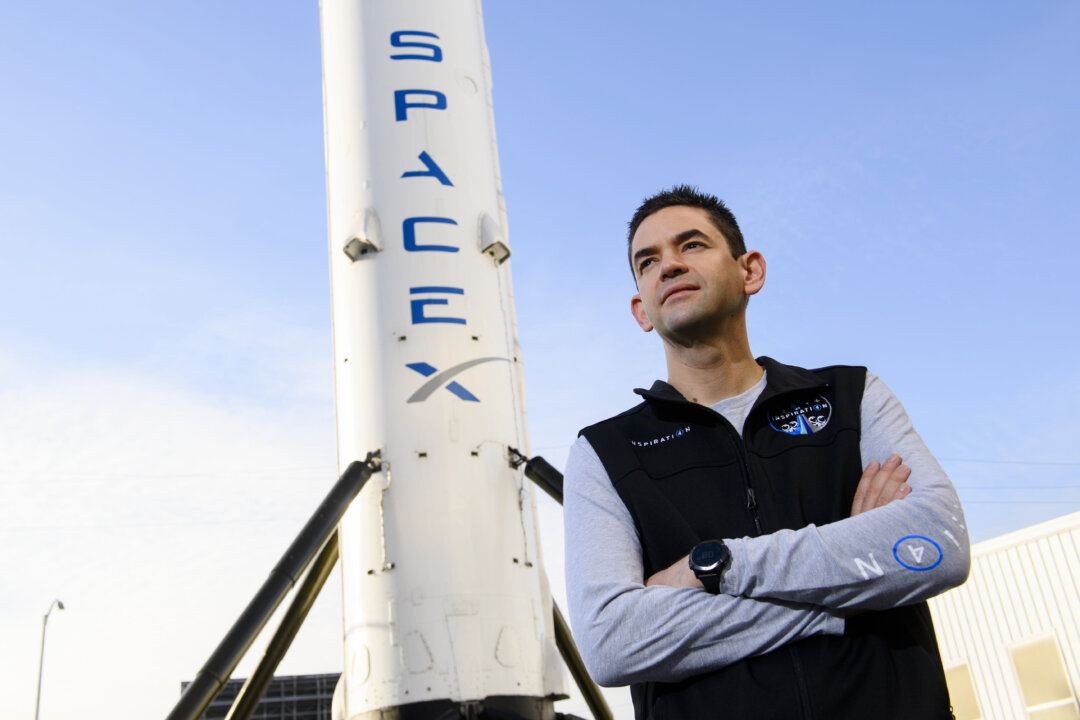‘Space is the ultimate high ground,’ Jared Isaacman said. ‘We cannot afford to cede that ground.’
Jared Isaacman appeared before the Senate Committee on Commerce, Science, and Transportation on April 9, promising a revival of the National Aeronautics and Space Administration (NASA) to a mission-first agency that will see the United States not only beat communist China to the moon but simultaneously maintain its dominance in low-earth orbit and land on Mars, and inspire the next generation along the way.
“I’d like to instill a very strong mission-first culture at the agency,” he said. “If we can execute on our mission, and get to the moon, get to Mars and all the other things, the inspiration, the stem education will take care of itself, a culture of ownership and accountability that when we make mistakes, we own them, we fix them, and we get back to delivering on their important objectives.”
Isaacman, an entrepreneur and veteran astronaut in his own right after undertaking the first-ever private spacewalk, was nominated to lead NASA by President Donald Trump on Dec. 4, 2024.
Appearing before the committee with his fellow astronauts from his Polaris Dawn and Inspiration 4 missions, as well as the four NASA astronauts selected for Artemis II in attendance, he faced a bipartisan desire to beat communist China in yet another space race and to ensure the agency’s objectives continue amid the threat of government-wide cutbacks.
Isaacman seeks to assume a role legally obligated by Congress to establish a permanent human presence either on the lunar surface or in lunar orbit, thanks to the NASA Transition Authorization Act of 2017, and is verbally bound by Trump’s inauguration speech to have American astronauts plant the American flag on Mars.
At the same time, he would inherit significantly delayed multinational lunar programs, such as the Gateway lunar space station of the Artemis program, to establish a sustainable human presence on the moon as a stepping stone to reaching Mars. Artemis II, the first manned mission of the program set to fly around the moon, has already been delayed several times, and the first landing since 1972 won’t be attempted until mid-2027.
Taking a pro-efficiency stance toward the existing lunar programs, he said one of his first priorities would be to determine why the programs are taking so long and costing so much.
Isaacman was asked about his commitment to the ongoing programs due to his close ties to Trump and Elon Musk, who have sought to impose government-wide budgetary and staffing cuts, à la the Department of Government Efficiency (DOGE), and an apparently long-standing tradition between administrations of program cancellations.
“I have no intention, as of now, to say that I would cancel any program. I need to, if I’m confirmed, get in the job and understand where things are at,” he said.
At another point in the hearing, he said that the Artemis program was the best and fastest way to get Americans back to the moon. However, he did not see it as a long-term people carrier to and from the moon.
He also said that NASA could pursue a moon and Mars program on parallel tracks without sacrificing resources from one for the other, and emphasized the need to identify a “scientific, economic, national security value” of staying on the moon beyond building a base just for its own sake.
Closer to home, Isaacman would inherit the nearly 30-year-old International Space Station (ISS), which is due for decommissioning by deorbiting by 2030, currently without a guarantee that any commercial station partners, like Axiom, will have a replacement station ready to ensure that Americans retain their presence in low earth orbit.
Committee members brought up Musk’s recent comments favoring an expedited deorbiting of the ISS, and if the would-be administrator agreed with that opinion.
Isaacman disagreed, emphasizing the need to maximize ISS utilization as long as they can to get as much scientific research done as possible, as well as discover what the space economy looks like in the advent of takeover by commercial stations.
“NASA’s mission is to undertake the near impossible, to solve the most demanding, complex engineering challenges, to bring commercial industry so commercial industry can follow, and to bring the rest of the world along the way,” he said.
Meanwhile, the Chinese Communist Party (CCP) continues to maintain its own space station, Tiangong, and expand its own satellite and anti-space capabilities. The Senate Committee Chair, Ted Cruz (R-Texas), expressed concern that, while the CCP committed to landing on the moon and establishing a permanent base with Russia by 2030, they could make a landing before the end of Trump’s current term.
Isaacman said that America could not afford to cede low earth orbit or lose the race to the moon to the communist Chinese and Russia.
“Space is the ultimate high ground,” he said. “We cannot afford to cede that ground.”

